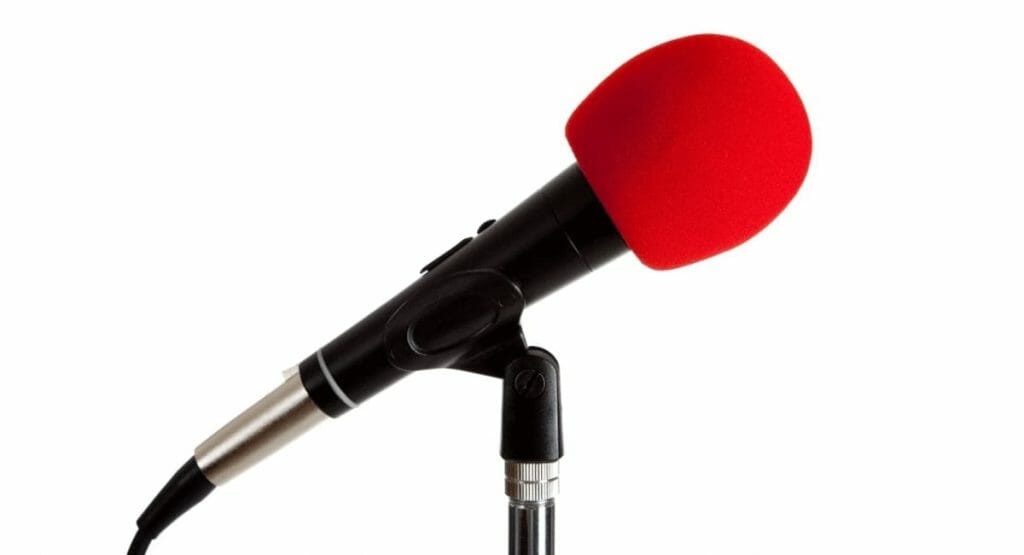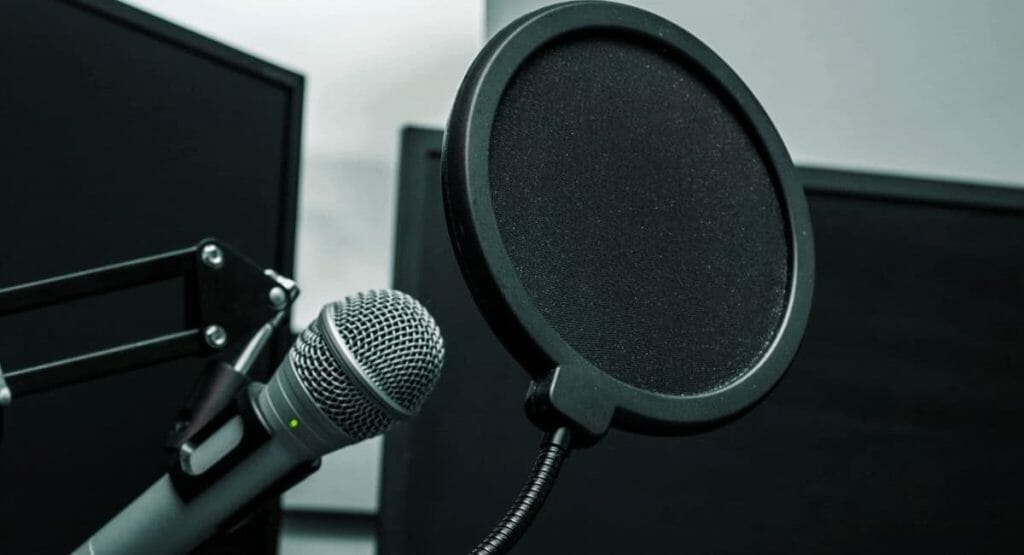With the advancement of technology, microphones have improved a lot, but they are still far from perfect. Even the best and the most expensive mics aren’t enough by themselves for superior quality audio production.
Good mics are designed to pick up and portray the slightest nuances of your voice while producing audio. However, this also enables them to pick up noise other than the intended voice.
Whether you’re recording music or podcasts in a studio setting or a YouTube video on the streets, your microphone can catch various noises. Using a pop filter or windscreen is the most common method to deal with unwanted noise and improve audio quality.
This article will analyze the effectiveness of using popular metal mesh filters versus foam windscreens. We will also discuss which one you should choose for audio recording.
What’s the Difference Between a Pop Filter and a Windscreen?
There are numerous technicalities involved in the production of high-quality audio. Choosing the right filter is one of the primary concerns to enhance audio quality. You can find various resource articles to help you improve voice recording here.
Both pop filters and windscreens are primarily used to reduce unwanted noises and produce purer audio. It may appear as if both filters have the same function, but in reality, they’re used for entirely different purposes and cannot be used interchangeably.
How Does a Pop Screen Work?
As the name suggests, a pop screen is used to remove the “pop” sounds from your audio. When you sing or talk into a mic, some consonants such as Ps and Bs are followed by minor air blasts. These wind blasts create vocal plosives or the “popping” sounds. While P and B produce the strongest plosive, other letters that produce pop sounds are T, D, K, and G.
A pop screen is usually a metal or nylon mesh placed over a ring frame. They are designed to diffuse breath blasts and prevent them from hitting the microphone directly.
Another sound aberration that pop filters help minimize is sibilance or fricatives. This is the hissing sound caused when you produce “S” or “Sh” sounds.
Mesh in the pop filters are directed towards certain angles, which helps diffuse the air bursts produced while speaking. It can be tough to filter unwanted noises out, like wind noises, while editing if you don’t use a filter.
It has been observed that metal pop filters generally work better in tackling pop sounds. You can learn different ways to make a DIY pop filter at home by yourself.
How Does a Windscreen Work?
Microphone windscreens are generally made of foam and come in a shape that fits around the entire microphone. Some also have faux fur, which helps absorb the excess air and soften its intensity.
Foam covers are particularly helpful when recording outside, as they restrict the wind sound and suppress other external noises. Thicker windscreens are better during outdoor recording because they can absorb more noise.
However, you must note that they also diffuse higher frequencies. You should not use a thick foam cover if you are recording indoors or in a studio. You can observe the audio quality difference that a foam windscreen creates through this video.
Benefits of Using a Pop Filter or Windscreen

Besides removing the plosives and sibilance from your audio, there are some additional advantages of using voice filters mentioned below:
- They prevent the sound of your breath during singing or talking.
- Some filters are designed to restrict wind sounds and other noises during outdoor recordings.
- Windscreens save your microphone from dirt, dust, etc. Accumulation of dirt and moisture can jam the airflow and affect the audio reception of your microphone.
- These filters also protect your mic from saliva that can affect your microphone.
Factors to Consider While Choosing a Pop Filter or Foam Windscreen
Before making a final purchasing decision on a pop filter or windscreen, there are several important factors you should consider, including:
The Tone of Your Voice
If your voice tone is slightly high-pitched, you should opt for foam windscreens, as they will mellow down the higher frequencies in your voice. Windscreens may not save you completely from the pop sound, but they will limit it to an extent. Residual pops can be managed during mixing and editing.
The Way It Fits on Your Mic
Some pop filters or windscreens may not fit properly over your mic. If your mesh filters keep shifting with the slightest movement, they may fail to filter out the pops.
Loose windscreens can create a rubbing sound, which will be an additional problem for you. Moreover, a loosely fit filter can distract you and other speakers from your podcast.
Type of Mic
Pop filters are freestyle and can be used with any microphone, whereas windscreens come in different shapes and sizes. You should go for a filter that fits best with your mic. If you are looking for the best microphones for recording vocals, feel free to take a look at this blog.
Video Consideration
If you want to record a video podcast, a pop mesh filter may cover your face while talking. You should choose a foam windscreen if you are recording a video.
Conclusion
Based on the information above, you can now decide whether to use a pop filter or windscreen for audio recording. Of the two, metal mesh filters are the most effective in removing consonant plosives.
While being less effective with pop sounds, windscreens manage higher frequencies well and prevent you from sounding shrill. They are also very effective for outdoor recording, and you can edit out the plosives later.
If you only have a windscreen and don’t want to purchase another filter, you can take full advantage of a windscreen’s perks. It will still be a major improvement over a naked microphone. You can find some more information on mic filters in this video.


